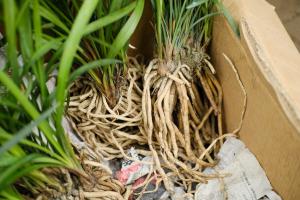Understanding Why Your Aloe Plant is Squishy
It can be concerning to find that your aloe plant is squishy when you touch it. While the first reaction may be to panic, it's important to understand what's happening to your plant before you take any action. Here's all you need to know about why your aloe plant may be squishy:
Overwatering
One of the most common reasons aloe plants become squishy is overwatering. As succulents, aloe plants have adapted to store water in their leaves to survive in dry environments. However, too much water can lead to root rot, which can cause the leaves to become soft and squishy.
To prevent this from happening, make sure you're not watering your aloe plant too frequently or giving it too much water at once. Allow the soil to dry out completely before watering again, and be sure to use a well-draining soil mix. You can also consider using a pot with drainage holes to ensure excess water can run off.
Disease or Pests
Squishy leaves can also be a sign of disease or pests. Mealybugs and spider mites are common pests that can damage aloe plants, causing the leaves to become soft and squishy. Fungal diseases like root rot can also be a problem if your plant is overwatered or in a humid environment.
To prevent pests and disease, make sure you're keeping your aloe plant in a well-ventilated area with good air circulation. Check your plant regularly for signs of pests or disease and treat them promptly if you notice anything suspicious.
Temperature and Sunlight
Lastly, squishy leaves can also be caused by inadequate sunlight or fluctuating temperatures. Aloe plants thrive in bright, indirect sunlight and warm temperatures. If your plant is kept in a dark or cool area, the leaves may become soft and squishy.
To correct this issue, move your plant to a sunnier area or add artificial light if necessary. You can also make sure the temperature in the room is above 60 degrees Fahrenheit and not fluctuating too much.
Conclusion
Before you panic about your aloe plant being squishy, take a deep breath and evaluate the situation. Understanding the potential causes can help you identify the problem and take corrective action. Whether it's overwatering, disease or pests, or inadequate sunlight and temperature, there are ways to fix the issue and get your aloe plant back on track.

 how many times do yo...
how many times do yo... how many planted tre...
how many planted tre... how many pine trees ...
how many pine trees ... how many pecan trees...
how many pecan trees... how many plants comp...
how many plants comp... how many plants can ...
how many plants can ... how many plants and ...
how many plants and ... how many pepper plan...
how many pepper plan...





























